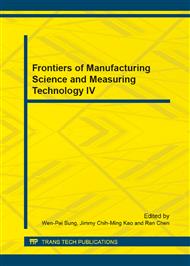p.1301
p.1305
p.1309
p.1313
p.1317
p.1321
p.1328
p.1333
p.1340
A Fast PSF Calibration Method for Single Lens Imaging
Abstract:
Modern cameras typically consist up to dozens of individual optical elements to compensate for geometric and chromatic aberrations. In recent year, high-quality single lens imaging has been proved possible by eliminating aberrations with computationally. Point spread function (PSF) calibration is key technique for single lens imaging. However, the existing PSF calibration method is time-consuming and has to be completely repeated for every new lens. This paper proposes a fast PSF calibration to accelerate the process. A PSF model is firstly estimated from a group of single lenses, which is close to the ideal PSF for specific tested single lenses. Then the PSF model is used as the iterative starting point in the calibration optimization. Experimental results show that this method can significantly improve the efficiency of PSF calibration process, and deconvolution performance is competitive with existing methods.
Info:
Periodical:
Pages:
1317-1320
Citation:
Online since:
August 2014
Authors:
Keywords:
Price:
Сopyright:
© 2014 Trans Tech Publications Ltd. All Rights Reserved
Share:
Citation:


